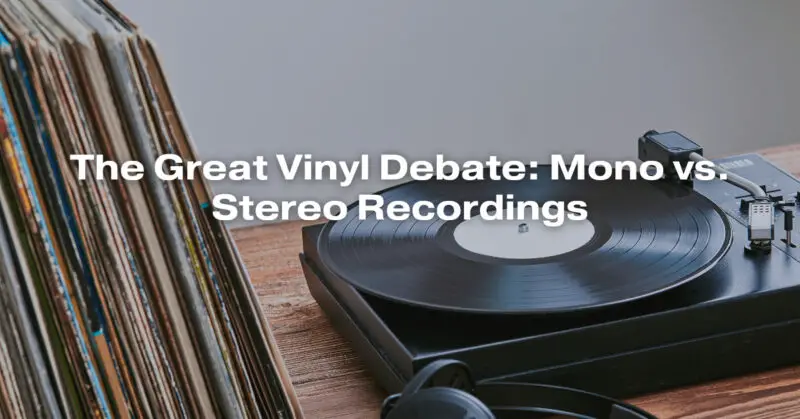The debate between mono and stereo recordings in the world of vinyl has been ongoing for decades, with audiophiles and music enthusiasts holding strong opinions on both sides. Each format has its merits and unique characteristics, and the choice between them often depends on personal preferences and the music being enjoyed. Let’s delve into the great vinyl debate: mono vs. stereo recordings.
Mono Recordings:
- Historical Significance: Mono recordings were the standard in the early days of the vinyl record industry. Many classic albums from the 1950s and early 1960s were originally recorded and released in mono.
- Simplicity and Focus: Mono recordings offer a straightforward, single-channel audio experience. This simplicity can lead to a more focused sound, with all instruments and vocals coming from a single point in the soundstage.
- Warmth and Vintage Feel: Mono recordings are often associated with a warm and nostalgic quality. They capture the sonic character of vintage recordings, making them appealing to those who seek a retro vibe.
- Historical Authenticity: Audiophiles and collectors often prefer mono versions of classic albums for their historical authenticity, as they represent the way the music was originally intended to be heard.
- Narrower Soundstage: One limitation of mono recordings is the absence of stereo separation. The soundstage is narrower, and there is less spatial depth compared to stereo recordings.
- Ideal for Early Rock and Jazz: Many early rock ‘n’ roll and jazz albums are best experienced in mono. The genre’s simplicity and raw energy shine in this format.
Stereo Recordings:
- Enhanced Spatial Experience: Stereo recordings offer a richer and more immersive listening experience. They create a sense of space and dimension by separating instruments and vocals into distinct channels.
- Expanded Soundstage: Stereo recordings have a wider soundstage, allowing for more precise placement of instruments and vocals. This can provide a more detailed and realistic representation of the music.
- Instrument Separation: Stereo recordings excel at showcasing the separation of instruments and vocals. This can make it easier to appreciate the individual nuances of each element in the mix.
- Modern Versatility: As stereo became the standard for audio recordings, most contemporary music is mixed and mastered in stereo. Stereo vinyl releases are readily available for a wide range of genres and eras.
- Genre Flexibility: Stereo is versatile and suits various music genres, from classical and jazz to rock, pop, and electronic music. It adapts well to the complexities of modern production.
- Audiophile Appeal: Audiophiles often prefer stereo vinyl for its fidelity and the potential for high-quality stereo systems to reproduce a more lifelike soundstage.
Personal Preference: The choice between mono and stereo recordings ultimately comes down to personal preference and the specific characteristics of the music being enjoyed. Some collectors and audiophiles appreciate the historical authenticity and warmth of mono, while others prefer the spatial depth and instrument separation of stereo. There’s no definitive answer in the great vinyl debate, as both formats have their own unique charm and are beloved by different segments of the vinyl-loving community.

